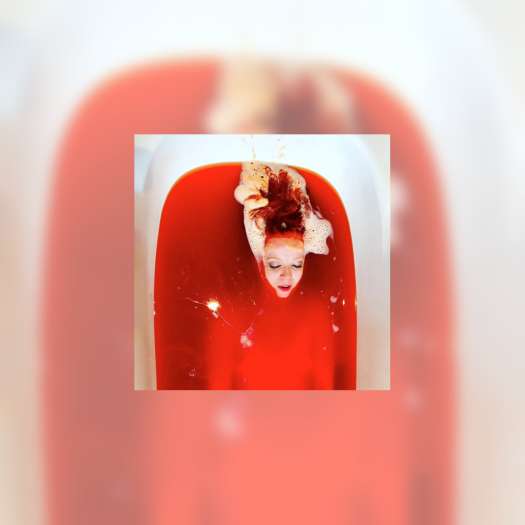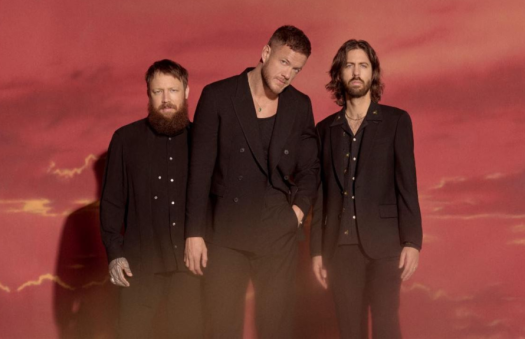A current smash hit on YouTube by the relatively unknown band OK Go features a static shot of the band performing complex but funny choreography on treadmills. The videos popularity has pushed the band to the top of the download charts. Job well done for a video that anyone with access to a miniDV camera could shoot for about $87.
Whether the budget is $87 or $870,000, a great video starts with a great idea one thats both creative and do-able. Therein rests the secret to music video success: X (a great idea) divided by Y (the total of your resources) equals A+ (heavy rotation on YouTube).
Tally up your resources before you start jamming on ideas so you wont end up emotionally married to something you can never pull off. Youll need crew personnel, shooting gear (camera, tripod, lenses, lights, tape stock, sufficient battery or AC power, something to play back audio), locations, props, costumes, transportation, and edit facilities. Write your script based on what you think you can do. Then have at least two pre-production meetings with the band and all your volunteers. At the first meeting, go over what the video is about and how you plan to shoot it. Much of it may not be doable. Revise the script accordingly. By the second meeting, you should have a pretty solid script and a workable plan.
These days, the format of choice for a no-budget shoot is miniDV. Basic consumer models will do the job, but if you have the choice, try to get your hands on a higher-end model with an option to shoot at 24 frames per second (for a film look). You will definitely need a tripod: nothing looks crappier than inadvertently jumpy footage. If you want to do smooth, rolling shots ("tracking shots) and you cant afford to rent a camera dolly, borrow a skaters longboard with big, soft wheels. Except for totally static shots from the tripod, shoot everything with movement either the action in the frame, or zooming or moving the camera itself. If you know two shots will end up in sequence, move in the same direction, (i.e., from left to right, or down to up). Youll get a much more fluid edit.
Make a shot list for each location. This is a list of camera positions, angles and takes that you need to build the scene. In addition to "wide shot of the band jumping on a trampoline, take establishing shots ("wide shot of suburban street), cutaways ("angle up driveway onto trampoline) and inserts ("close-up of drumsticks in upside-down drummers hand). These shots will give you cutting options as well as help establish the "geography of the action. Remember to record "handles on each shot; i.e., roll the camera for a few seconds before the action starts, and let it roll a few seconds after the actions captured. This gives you cutting room. When you are shooting, make a note of your camera settings on each set-up; many cameras return to a default setting when they are powered off, and you want to make sure your footage has a consistent look. Have plenty of blank DV tapes on hand and label them as they go in and out of the camera. Bring a clipboard to make a note of the time-code of each take, and highlight the ones that you like.
You may need to play back the song during the shoot. Depending on what youve scripted, you might just need a boom box. Getting a perfectly matched lip-synch requires gear that allows you to synch the audio playback to the camera time code, which puts us now in technically more complex (and expensive) territory. You can cheat it if you record a count or clap on the audio tracks of the DV tape. Do give it some serious thought before you put lip-synch into the script. If the video has a performance element, you might want to go with wide shots rather than close-ups so that any lip-synch mistakes arent so noticeable.
If you are shooting indoors, you will need lighting. A word of extreme caution on this: lighting is a guaranteed pain. Camera operators like to have a zillion lights (of course they do: good lighting is what makes the footage look good), but they take a zillion years to set up, and proper lighting is expensive. Very seriously consider shooting exteriors only. You may still want to have a light available for close-ups, and a big piece of white foam core to diffuse and bounce the light toward your subject (rather than having it glaring on them). Unless you really know what you are doing, do not go down the path of gels and grip stands: you will waste time.
Further on locations, the easiest, cheapest way to go is exterior locations in non-public or low-traffic places. Technically, you are required to have a permit to shoot in public places, like city streets and parks. Your municipal office usually manages permits; it may take a few days to get one. They can be expensive, but its worth asking for a freebie. But you can go guerrilla-style and get away with it provided youre smart about choosing the time to shoot. (Dont shoot at rush hour on Main Street.) If you do wind up on city property, be considerate of its public users. Antagonising them will only result in you getting moved along by the cops.
If your location is privately owned, get permission in advance to shoot there. You dont want to get dinged with a trespassing fine. Likewise, that boarded-up factory might look cool but it could be a death trap. Safety first!
Once youve got it in the can, now comes the fun part: editing. Many recent computers come packaged with editing software like Windows MovieMaker or Apple iMovie. These may do the job; there are also numerous freeware editing packages on the web (like Avid FreeDV), or editing packages that you can download on a trial basis. Prior to getting started on the edit, go through all your footage and make a tape log and a list of "selects: the shots you know you want to use. Digitise only those shots to save time and space on the hard drive. Whatever program you go with, try to practice good footage management: once youve plundered your DV stock and cut the final version, put the properly labelled DV tapes in a safe place, along your logs and selects.
Then go ahead and upload your masterpiece to the world.
Frequently Asked Questions
Is there funding available for music videos?
VideoFACT (www.videofact.ca) funds up to $20,000 to a maximum of 50 percent of your budget. The rest you have to raise yourself, but some costs may be allowable "in kind donations of time or equipment. You dont have to be signed to a label to get VideoFACT dough. Applications are judged on creativity and strength of the finance and production plan and the demand is very competitive, so make sure you have a tight plan and a producer who knows what shes doing before you waste time applying.
Wheres the best place for cheap rentals?
Film schools, film/video cooperatives and artist-run centres have high-end miniDVs (as well as other cameras, lights, lenses, audio, editing and other gear) to borrow or rent. If youre shooting the video yourself, you may have to become a member and take a workshop. Artist-run centres and film co-ops are chock-full of people who know how to use the equipment and may be keen to volunteer in exchange for a Director of Photography credit, so you might want to just post a notice for a volunteer DOP.
Who owns a music video: the record label, band, director or producer?
The general rule is "who pays, owns, as far as record labels are concerned. If theres no label involved and the video is made on the cheap as a collaboration between the band, the director, and all their friends and relations, then you should all agree in advance on who "owns it, at least as far as sharing any revenue it might generate (which is close to zero, but you never know), and agree on who can show it in what context. "Were experiencing a big transitional point in videos since they have become downloadable commodities for sale, says Jannie McInnes. "There has been a lot of debate about who reaps the benefits of revenue streams from mobile downloads and online music companies. With a work for hire status, video directors and production companies are not entitled to anything like royalties. [Acclaimed music video and film director] Jonathan Glazer said, If we are a charity, then register us.
Whether the budget is $87 or $870,000, a great video starts with a great idea one thats both creative and do-able. Therein rests the secret to music video success: X (a great idea) divided by Y (the total of your resources) equals A+ (heavy rotation on YouTube).
Tally up your resources before you start jamming on ideas so you wont end up emotionally married to something you can never pull off. Youll need crew personnel, shooting gear (camera, tripod, lenses, lights, tape stock, sufficient battery or AC power, something to play back audio), locations, props, costumes, transportation, and edit facilities. Write your script based on what you think you can do. Then have at least two pre-production meetings with the band and all your volunteers. At the first meeting, go over what the video is about and how you plan to shoot it. Much of it may not be doable. Revise the script accordingly. By the second meeting, you should have a pretty solid script and a workable plan.
These days, the format of choice for a no-budget shoot is miniDV. Basic consumer models will do the job, but if you have the choice, try to get your hands on a higher-end model with an option to shoot at 24 frames per second (for a film look). You will definitely need a tripod: nothing looks crappier than inadvertently jumpy footage. If you want to do smooth, rolling shots ("tracking shots) and you cant afford to rent a camera dolly, borrow a skaters longboard with big, soft wheels. Except for totally static shots from the tripod, shoot everything with movement either the action in the frame, or zooming or moving the camera itself. If you know two shots will end up in sequence, move in the same direction, (i.e., from left to right, or down to up). Youll get a much more fluid edit.
Make a shot list for each location. This is a list of camera positions, angles and takes that you need to build the scene. In addition to "wide shot of the band jumping on a trampoline, take establishing shots ("wide shot of suburban street), cutaways ("angle up driveway onto trampoline) and inserts ("close-up of drumsticks in upside-down drummers hand). These shots will give you cutting options as well as help establish the "geography of the action. Remember to record "handles on each shot; i.e., roll the camera for a few seconds before the action starts, and let it roll a few seconds after the actions captured. This gives you cutting room. When you are shooting, make a note of your camera settings on each set-up; many cameras return to a default setting when they are powered off, and you want to make sure your footage has a consistent look. Have plenty of blank DV tapes on hand and label them as they go in and out of the camera. Bring a clipboard to make a note of the time-code of each take, and highlight the ones that you like.
You may need to play back the song during the shoot. Depending on what youve scripted, you might just need a boom box. Getting a perfectly matched lip-synch requires gear that allows you to synch the audio playback to the camera time code, which puts us now in technically more complex (and expensive) territory. You can cheat it if you record a count or clap on the audio tracks of the DV tape. Do give it some serious thought before you put lip-synch into the script. If the video has a performance element, you might want to go with wide shots rather than close-ups so that any lip-synch mistakes arent so noticeable.
If you are shooting indoors, you will need lighting. A word of extreme caution on this: lighting is a guaranteed pain. Camera operators like to have a zillion lights (of course they do: good lighting is what makes the footage look good), but they take a zillion years to set up, and proper lighting is expensive. Very seriously consider shooting exteriors only. You may still want to have a light available for close-ups, and a big piece of white foam core to diffuse and bounce the light toward your subject (rather than having it glaring on them). Unless you really know what you are doing, do not go down the path of gels and grip stands: you will waste time.
Further on locations, the easiest, cheapest way to go is exterior locations in non-public or low-traffic places. Technically, you are required to have a permit to shoot in public places, like city streets and parks. Your municipal office usually manages permits; it may take a few days to get one. They can be expensive, but its worth asking for a freebie. But you can go guerrilla-style and get away with it provided youre smart about choosing the time to shoot. (Dont shoot at rush hour on Main Street.) If you do wind up on city property, be considerate of its public users. Antagonising them will only result in you getting moved along by the cops.
If your location is privately owned, get permission in advance to shoot there. You dont want to get dinged with a trespassing fine. Likewise, that boarded-up factory might look cool but it could be a death trap. Safety first!
Once youve got it in the can, now comes the fun part: editing. Many recent computers come packaged with editing software like Windows MovieMaker or Apple iMovie. These may do the job; there are also numerous freeware editing packages on the web (like Avid FreeDV), or editing packages that you can download on a trial basis. Prior to getting started on the edit, go through all your footage and make a tape log and a list of "selects: the shots you know you want to use. Digitise only those shots to save time and space on the hard drive. Whatever program you go with, try to practice good footage management: once youve plundered your DV stock and cut the final version, put the properly labelled DV tapes in a safe place, along your logs and selects.
Then go ahead and upload your masterpiece to the world.
Frequently Asked Questions
Is there funding available for music videos?
VideoFACT (www.videofact.ca) funds up to $20,000 to a maximum of 50 percent of your budget. The rest you have to raise yourself, but some costs may be allowable "in kind donations of time or equipment. You dont have to be signed to a label to get VideoFACT dough. Applications are judged on creativity and strength of the finance and production plan and the demand is very competitive, so make sure you have a tight plan and a producer who knows what shes doing before you waste time applying.
Wheres the best place for cheap rentals?
Film schools, film/video cooperatives and artist-run centres have high-end miniDVs (as well as other cameras, lights, lenses, audio, editing and other gear) to borrow or rent. If youre shooting the video yourself, you may have to become a member and take a workshop. Artist-run centres and film co-ops are chock-full of people who know how to use the equipment and may be keen to volunteer in exchange for a Director of Photography credit, so you might want to just post a notice for a volunteer DOP.
Who owns a music video: the record label, band, director or producer?
The general rule is "who pays, owns, as far as record labels are concerned. If theres no label involved and the video is made on the cheap as a collaboration between the band, the director, and all their friends and relations, then you should all agree in advance on who "owns it, at least as far as sharing any revenue it might generate (which is close to zero, but you never know), and agree on who can show it in what context. "Were experiencing a big transitional point in videos since they have become downloadable commodities for sale, says Jannie McInnes. "There has been a lot of debate about who reaps the benefits of revenue streams from mobile downloads and online music companies. With a work for hire status, video directors and production companies are not entitled to anything like royalties. [Acclaimed music video and film director] Jonathan Glazer said, If we are a charity, then register us.




